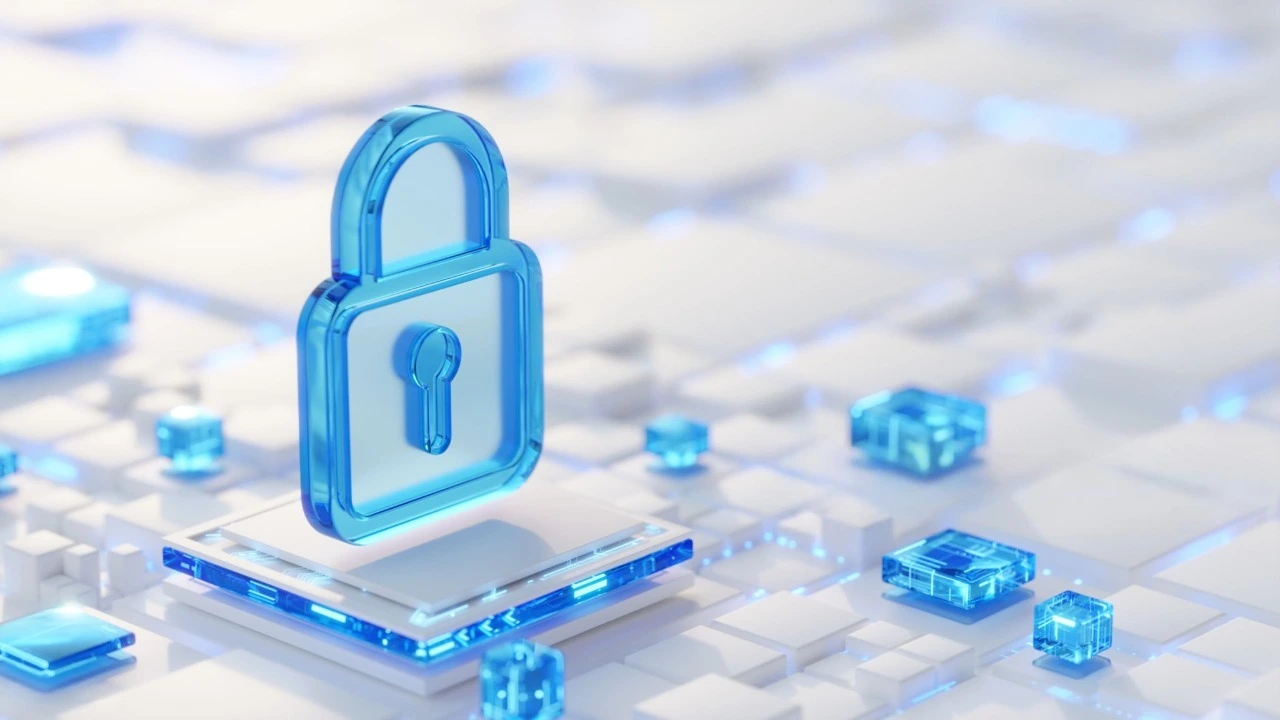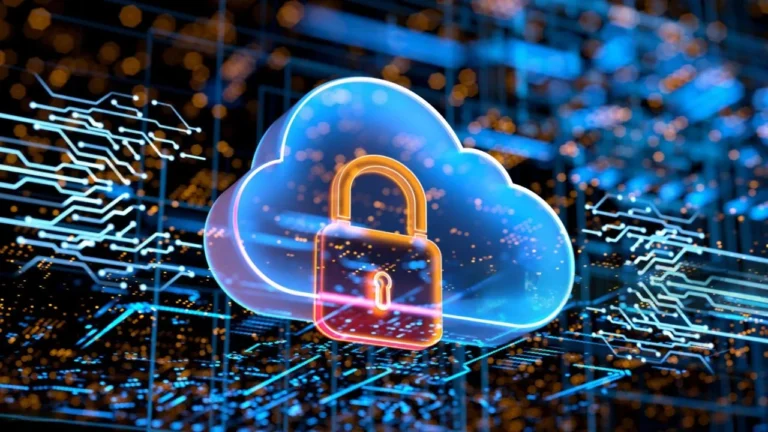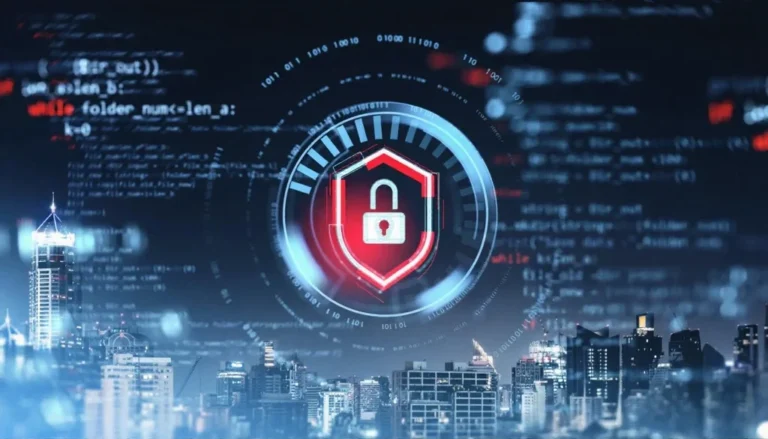Introduction to Network Security
Did you realize that every 39 seconds, a cyberattack happens? Network security is essential since data breaches will cost an average of $4.88 million in 2024. This guide covers all you need to know about hotspot network security keys, getting a notification that says, “you’ve been blocked by network security,” or the Ethiopian Network Security Agency. We’ll talk about network security keys, policies, and technologies like Juniper Networks Pulse Secure, among other things. You will learn useful ways to keep your data safe and secure in the digital world of 2025, whether you are a beginner or an IT expert.
What is Network Security?
Network security keeps computer networks safe from hackers, unlawful access, and data theft. It keeps data safe by using things like firewalls, encryption, and access controls. Firewalls keep undesirable traffic from getting through. Encryption makes data unreadable to anyone who doesn’t have permission to read it. Access controls limit who can use the resources on the network. Policies and training to stop people from making mistakes are also part of network security. It makes sure that data is private, safe, and accessible. As cyber threats emerge, network security changes to deal with new ones. This importance extends to both organizations and individuals.
Why Network Security Matters in 2025
The risks associated with cybercrime are increasing. By 2025, the global economy will incur an annual expenditure of $10.5 trillion due to the over 2,200 cyberattacks that occur each day. Data intrusions significantly impact businesses, resulting in an average expense of $9.44 million in the United States. Individuals who work from home and utilize IoT devices compromise security. Financial losses, legal complications, and a loss of trust can result from weak security. The efficient operation of all systems, the protection of private information, and the adherence to regulations such as GDPR are all ensured by robust network security. Network security is a business necessity, not just a technological issue. If you are proficient in the use of tools, adhere to regulations, and obtain certification, you can maintain a competitive edge over cybercriminals.
Advantages of Network Security
Network security offers numerous benefits. It safeguards data, ensures operations run smoothly, and builds trust. Let’s explore how it helps.
Protecting Sensitive Data
One of the best things about network security is that it keeps private information safe. This includes private information, financial records, and trade secrets. Encryption makes it impossible for hackers to read data. Access restrictions make sure that only people you trust can get in. Strong passwords and multi-factor authentication (MFA) are two examples of security measures that prevent unauthorized access to sensitive information. Without these, data breaches can reveal private information, which can lead to identity theft or loss of money. Network security protects your data, lowers risks, and gives you peace of mind.
Enhancing Business Continuity
Businesses can keep going thanks to network security. Ransomware and other cyberattacks can halt business operations, resulting in downtime and financial losses. Intrusion detection systems and other security measures find threats early. Regular backups and recovery plans ensure swift system recovery. For instance, a ransomware-targeted business can recover its data without having to pay the attackers. Strong security keeps your organization running smoothly and reliably by reducing problems.
Building Customer Trust
Privacy is important to customers. Network security indicates that you care about their information. Secure systems stop breaches that damage trust. Following rules like HIPAA makes you more trustworthy. Customers will stick with a business that has excellent security. On the other hand, a single breach can turn clients away. Having strong network security sets you apart from your competitors and demonstrates your credibility.
Understanding Network Security Keys
Network security keys are essential for safe Wi-Fi connections. They encrypt data and block unauthorized access. Let’s dive into what they are and how to find them.
What is a Network Security Key?
A network security key is a password for Wi-Fi networks. It secures connections using standards like WPA2, the most common today. You enter this key when connecting to Wi-Fi to verify your authorization. It encrypts data, so hackers can’t steal it. Without the key, no one can join your network. This feature keeps your internet safe from intruders.
Where to Find Your Network Security Key
How you set up your network will determine how to find your security key. Look for the default key on the label of your router. You may go to the router’s web interface by typing its IP address into a web browser. You may find the key under the wireless settings. To see it on connected devices, like a Windows PC, go to Network and Sharing Center. This section explains how to obtain keys for specific devices and service providers:
Xfinity Network Security Key
Xfinity users find the key on the router’s label, listed as “Network Key.” Log into the Xfinity app or online account to view or change it. Ensure you save changes to avoid connection issues.
Spectrum Network Security Key
Spectrum’s key is on the router or in the web interface. Use Spectrum’s online portal to manage Wi-Fi settings. Check the label if you haven’t changed the default key.
Hotspot Network Security Key
For hotspots, the key is set when you enable the feature. On smartphones, find it in hotspot settings. Change it regularly for security.
Mobile Hotspot Network Security Key
Dedicated mobile hotspots display the key on the device screen or in settings. Update it via the device’s menu to keep it secure.
IPhone Network Security Key
On iPhones, go to Settings > Personal Hotspot to see the Wi-Fi password. Change it if needed, but share it only with trusted users.
|
Provider/Device |
Method to Find Security Key |
|
Xfinity |
Router label, Xfinity app, online account |
|
Spectrum |
Router label, web interface, Spectrum portal |
|
General Router |
Router label, web interface |
|
Windows PC |
Network and Sharing Center > Wireless Properties |
|
IPhone Hotspot |
Settings > Personal Hotspot |
|
Android Hotspot |
Settings > Connections > Mobile Hotspot |
Troubleshooting Network Security Key Issues
It’s typical for keys to have problems. Connections don’t work when you have the wrong keys. If you forget your keys, you can’t get in. To correct it, check the spelling and case of the key. To get the default key back, reboot the router. This will, however, erase all of your settings. To avoid connection problems, make sure your device drivers are up to date. Call your provider if the problems keep happening. For instance, you can get help from Xfinity or Spectrum. Keep your key safe so that no one else can use it.
Common Network Security Issues and Solutions
Network issues can disrupt your day. From blocks to slow connections, here’s how to handle them.
You’ve Been Blocked by Network Security
Seeing “network security has blocked you”? This signifies that the system thought your device was acting suspiciously, such having malware or breaking the rules. Look for viruses on your device. Make sure you’re not going to sites that are off-limits. If you have a real block, get in touch with the network admin. Don’t use a VPN to get around blocks because it can break the regulations. Following the rules makes it easy for you to get in.
Other Frequent Network Security Challenges
Heavy security protocols can make networks slow. Set your firewall settings to get the right mix between speed and safety. Settings that aren’t put up correctly can leave holes. Audits that happen on a regular basis find mistakes. Insider threats, such as employees who don’t pay attention, are dangerous. Set up access limits and keep an eye on activity. Scammers use phishing to get people to give them information. Teach everyone how to recognize real emails from phony ones. Taking proactive steps will keep your network safe.
Identification in Network Security
Identification ensures only trusted users access your network. It’s the first step in keeping systems secure.
What is Identification in Network Security?
Identification in network security checks who or what is trying to get into a network. It’s the first thing you do before you log in. Users give a username or device ID. Passwords, fingerprints, and multi-factor authentication (MFA) are all common ways to protect your account. MFA uses both passwords and codes that are texted to your phone. Strong identification keeps hackers out. It’s like displaying your ID at a club; only people who have been checked can go in.
Best Practices for Secure Identification
Networks are safeguarded by robust identification. To ensure that your passwords are difficult to predict, incorporate symbols, numbers, and letters. Modify them extensively. MFA should be enabled to enhance security. Address security vulnerabilities by updating systems. Monitor login attempts for any unusual behavior. Inform individuals to refrain from disclosing their logon credentials. These measures ensure the safety of the environment and prevent individuals who are not authorized to be present from entering.
Case Studies: Identification Failures and Lessons
Weak identification might cause a lot of trouble. Hackers used stolen credentials to tweet from famous Twitter accounts in 2020. It may have been halted with stronger MFA. The Equifax breach in 2017 let hackers get to data because systems weren’t patched and access controls weren’t strong enough. Regular updates and rigorous rules about who can access information stop these kinds of problems. Use what you learn from these to make your security stronger.
Network Security Policies
Policies guide how networks stay secure. They set rules for everyone to follow.
What is a Network Security Policy?
A network security policy is a set of rules to protect networks and data. It covers access control, data protection, and incident response. Policies define who can access what, how data is stored, and what to do during a breach. They ensure everyone follows the same security standards, reducing risks.
Network Security Policy Sample
A sample policy includes purpose, roles, and rules. It might list acceptable uses, password requirements, and remote access guidelines. For example, require passwords to be 12 characters long. Ban personal email on work devices. Templates online can help small businesses start. Customize them to fit your needs.
Implementing and Enforcing Policies
Write clear policies and share them with employees. Train staff on rules. Use tools to monitor compliance. Update policies yearly to address new threats. Enforce consequences for violations. This keeps your network secure and compliant.
Network Security Tools and Technologies
Tools are the backbone of network security. They detect, prevent, and respond to threats.
Overview of Popular Network Security Tools
Firewalls keep traffic that isn’t allowed from getting through. Intrusion detection systems (IDS) find threats. VPNs protect connections from afar. Data is safe with encryption. Antivirus software and endpoint protection are two examples of tools that make things safer. Pick tools based on what you need. Small businesses may not need as complicated solutions as big firms.
Juniper Networks Pulse Secure
The best VPN tool is Juniper Networks Pulse Secure. It makes sure that staff may safely access things from afar. Secure connections, user authentication, and endpoint inspections are some of the features. It’s great for companies that have employees that work from home. Pulse Secure has high security and is easy to set up, which makes it better than other VPNs. It will work well in 2025.
Other Leading Tools in 2025
Check Point has firewalls and ways to stop threats. Palo Alto Networks offers security powered by AI. SecureX from Cisco combines many tools into one. These methods deal with modern dangers like ransomware. Look into different research tools to locate the ideal one for your network.
Network Security Certifications and Training
Certifications prove your skills and boost your career. They’re key for IT pros.
Why Certifications Matter
Certifications prove that you know a lot about network security. As cyber dangers develop, they are in demand. Certified professionals make more money and deal with more complicated threats. Employers like CompTIA Security+ or CISSP qualifications. They also make sure you know what’s going on with trends.
Check Point Exam: Network Security
The Check Point test checks your knowledge of firewalls and VPNs. It includes network management and threat prevention. Use Check Point’s approved materials or take online classes to study. Taking practice tests is a good way to get ready. If you pass, you’ll get a reputable certification in network security. For novices, CompTIA Security+ is great. CISSP is good for people who have worked in the field before. Ethical hacking is what CEH is all about. There are different talents that each certification tests. Pick based on what you want to do with your life. Coursera and other online platforms offer prep courses.
Other Relevant Certifications
For novices, CompTIA Security+ is great. CISSP is good for people who have worked in the field before. Ethical hacking is what CEH is all about. There are different talents that each certification tests. Pick based on what you want to do with your life. Coursera and other online platforms offer prep courses.
Network Security Engineer: Roles and Responsibilities
Network security engineers protect networks daily. Their role is critical.
Network Security Engineer Job Description
A network security engineer makes sure that networks are safe and keeps them that way. They set up firewalls, keep an eye on threats, and deal with problems. Knowledge of encryption, VPNs, and IDS is one of the skills. In 2025, the average salary is between $100,000 and $150,000. There is a lot of demand because cyber threats are tearing down.
How to Become a Network Security Engineer
Get a degree in IT or cybersecurity to start. Get experience by doing internships. Get certified in things like CompTIA Security+. Learn how to use tools like VPNs and firewalls. Doing things in labs helps you learn. Connecting with professionals can help you get jobs.
Day-to-Day Life of a Network Security Engineer
Engineers keep an eye on networks for risks. They address security holes, upgrade systems, and test them. They also teach their employees about the rules. Every day, you do a mix of technical work and problem-solving to keep networks safe.
Ethiopian Network Security Agency
Ethiopia’s agency plays a unique role in cybersecurity. Let’s explore it.
Introduction to Ethiopia’s Information Network Security Agency (INSA)
The Ethiopian Network Security Agency (INSA) is in charge of keeping Ethiopia’s digital infrastructure safe. It was created to protect government networks and resist cyber attacks. INSA makes rules and trains people to protect data.
Information Network Security Agency Ethiopia
INSA is in charge of cybersecurity in Ethiopia. It keeps an eye on risks, protects networks, and raises awareness. One of the most important projects is securing important networks like banking and telecommunications. INSA works with agencies around the world to stay up-to-date.
Impact on Ethiopia’s Digital Landscape
INSA helps Ethiopia’s digital economy grow. It keeps online services safe by stopping cyberattacks. It helps with e-government and new ideas in technology. INSA’s work makes Ethiopia a safer place to do business online.
How to Engage with INSA
Businesses can get help with cybersecurity from INSA. Check out their official website for resources. People can go to INSA’s training programs. Talking to INSA will help you learn more about security.
Educational Resources for Network Security
Learning resources help you master network security. From slides to courses, here’s what’s available.
Computer Network Security PPT
PowerPoint slides make network security easy to understand. You may get free templates from sites like SlideShare. Make your own about things like encryption, firewalls, and rules. Add pictures to help people understand better. Paid sites like Envato have high-quality PPTs.
Other Learning Materials
You may learn the basics of network security with online courses on Coursera or Udemy. Advanced tactics are taught in books like “Hacking Exposed.” Cisco and Check Point both have blogs that offer news. These resources are good for everyone.
Hands-On Learning
Make a home lab to practice in. Virtual machines are great for testing firewalls and VPNs. TryHackMe and other online laboratories have guided exercises. Real-world abilities come from practicing with your hands.
Best Practices for Network Security in 2025
Stay ahead with these proven strategies. They keep your network secure.
Staying Ahead of Cyber Threats
Update software regularly to patch vulnerabilities. Use threat intelligence to track new risks. Monitor networks for unusual activity. These steps stop attacks before they start.
Securing Remote Work Environments
Remote work needs strong security. Use VPNs like Juniper Networks Pulse Secure. Enable zero-trust policies. Secure endpoints with antivirus. This protects remote workers from threats.
Educating Employees and Users
Human error causes many breaches. Train staff to spot phishing emails. Teach secure password habits. Run regular workshops. Educated users are your first line of defense.
FAQs on Network Security
Conclusion
Network security protects your data and keeps systems running. From finding your network security key to understanding policies, this guide covers it all. Cyber threats are real, but with tools, knowledge, and vigilance, you can stay safe. Apply these tips to secure your network today. Share your thoughts or questions—comment below!



